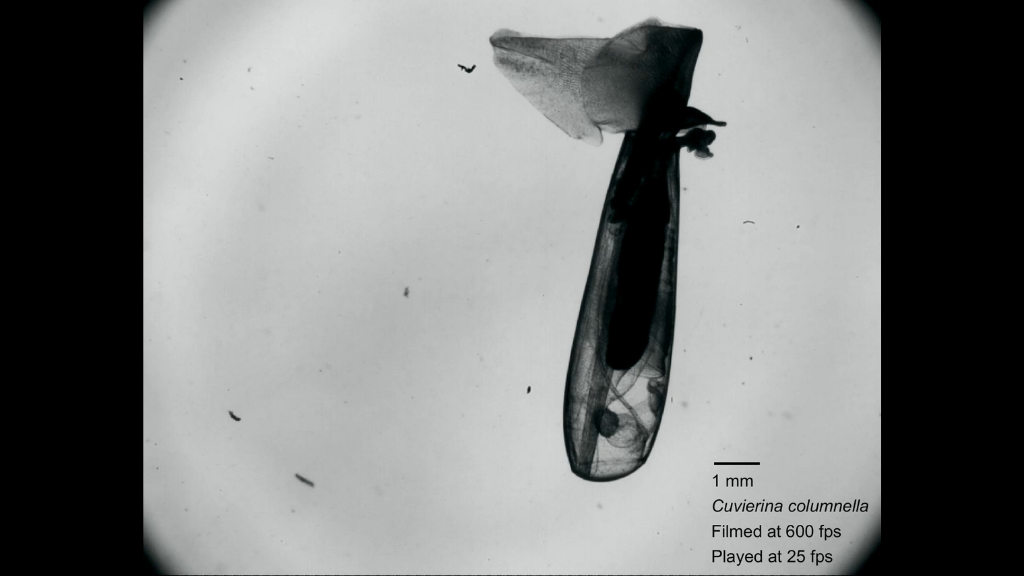
Some marine snails soar through the water by flapping their squidgy appendages to and fro, similar to butterfly wings — now, scientists have discovered that the shape of the snails' shells also helps them zip through the sea.
The new study, published Sep. 7 in the journal Frontiers in Marine Science, shows that large snails with slim, elongated shells cut through the water more quickly than small snails with round, coiled shells. The small snails swim slower, in part, due to their small wings, but their size and speed also make it so they can't easily overcome resistance from the surrounding water, study author David Murphy, an assistant professor in the Department of Mechanical Engineering of the University of South Florida, told Live Science in an email. "The larger snails can easily overcome the effects of this viscosity," or the water's resistance to flow, and those with streamlined shells cut through the water even more easily, he said.
The streamlined snails slip through water similar to how an airplane wing carves through air.
Related: Sea science: 7 bizarre facts about the ocean
While large snails swim faster than the small ones, all nine snail species that the authors studied travel similar distances when searching for food, according to a statement. The snails, which measure about 0.03 to 0.5 inches (0.9 to 13.1 millimeters) in length, each travel between 162 and 984 feet (50 to 300 meters) per day, swimming skyward to feed at the surface at night and sinking down to rest during the day.
When swimming, the snails can cover between one and 24 body lengths per second, rising in a zig-zagging spiral; when done for the night, they sink down at a slight angle, descending with similar speed. The large snails gracefully glide through the water as they sink, thanks to their elongated shells.
Seven of the snail species included in the study are fondly known as "sea butterflies" for their fluttering wings; in past research, Murphy and his colleagues found that sea butterflies flap their wings in a figure-eight pattern, similar to the movement of fruit flies, and called the creatures "honorary insects," Live Science previously reported.
Murphy and his lab study animals that fly both in and out of the water, and they plan to design tiny aquatic and aerial vehicles inspired by different organisms, Murphy said. The vehicles "could be used in many different applications. For example, they could take data under the water surface and then pop back into the air to transmit data," he said.
Originally published on Live Science.
The Link LonkSeptember 07, 2020 at 11:15AM
https://ift.tt/2R1yEdL
These sea snails fly like butterflies, sink like hang-gliders (VIDEO) - Live Science
https://ift.tt/2CoSmg4
Sea
/cloudfront-us-east-2.images.arcpublishing.com/reuters/CZF6NULMVVMEXHOP7JK5BSPQUM.jpg)
No comments:
Post a Comment